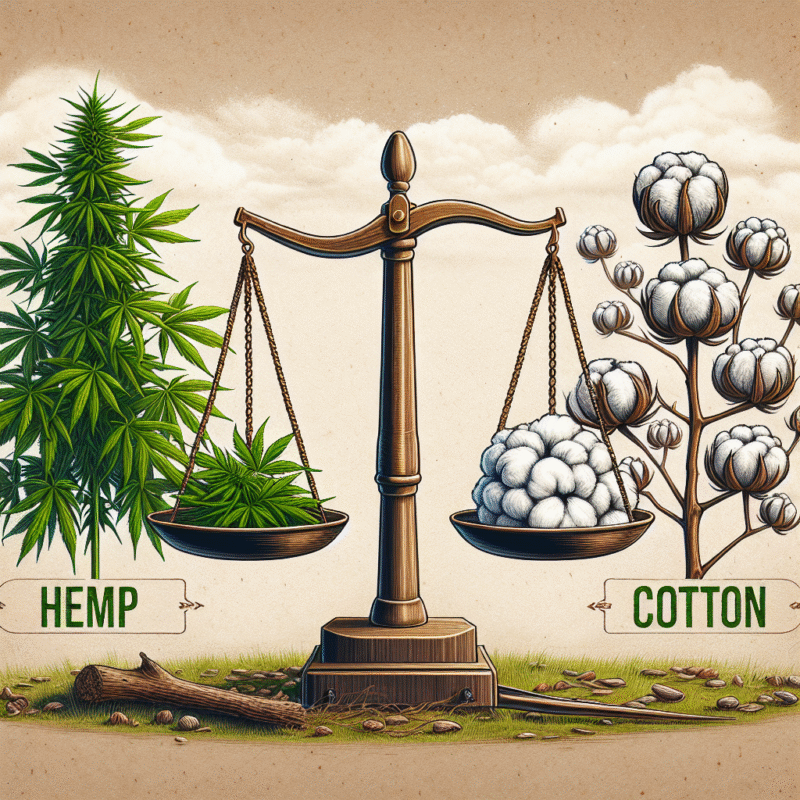Hemp vs. Cotton: Why Hemp is the Sustainable Fabric of the Future
As the world becomes increasingly aware of the environmental impacts of textile production, the search for sustainable fabric alternatives has intensified. Two strong contenders in this arena are hemp and cotton. While cotton has long been a popular choice for clothing and textiles, hemp is emerging as the sustainable fabric of the future. Below, we explore the advantages of hemp over cotton, emphasizing sustainability, environmental impact, and versatility.
The Environmental Case for Hemp
Water Usage
One of the most significant environmental concerns associated with cotton production is its high water consumption. It takes approximately 7,000 liters of water to produce just one kilogram of cotton. In contrast, hemp requires far less water—about 2,500 liters for the same amount. This difference highlights hemp’s efficiency as a crop, making it a more sustainable choice in regions where water scarcity is a pressing issue.
Pesticide and Herbicide Use
Cotton is often dubbed "the dirtiest crop on Earth" due to its heavy reliance on pesticides and herbicides. These chemicals can have devastating effects on ecosystems and human health. Hemp, on the other hand, is a naturally pest-resistant plant. Its growth can even improve soil health by replenishing nutrients and suppressing weeds, reducing the need for harmful chemicals.
Carbon Sequestration
Hemp is also an exceptionally effective carbon sink. It absorbs significant amounts of CO2 from the atmosphere during its growth, effectively mitigating climate change. Some studies suggest that hemp can capture up to four times more CO2 than trees over the same period. This natural carbon sequestration contributes to a greener planet and emphasizes hemp’s role in sustainable agriculture.
Soil Health and Farming Practices
Hemp promotes healthy soil through deep root systems that prevent erosion and promote aeration. It can be cultivated in a variety of soil types without depleting its nutrients. Many hemp farming practices are organic by default, allowing for crop rotations that enhance soil fertility and ecosystem biodiversity.
In contrast, conventional cotton farming often leads to soil degradation and reduced fertility due to monoculture practices. The transition to hemp farming can help restore degraded lands, making it a beneficial crop for farmers and the environment alike.
Versatility of Hemp
Hemp is not only sustainable but also incredibly versatile. The fibers can be used in a variety of applications, including:
- Textiles: Hemp fabric is known for its strength, durability, and breathability. It softens with washing, becoming more comfortable over time.
- Rope and Twine: Historically used for ropes, hemp is still valued for its strength and resistance to rot.
- Construction: Hemp can be used to create bio-composite materials and insulation, contributing to sustainable building practices.
- Bioplastics: Hemp oil can be processed into biodegradable plastics, providing an eco-friendly alternative to petroleum-based plastics.
Economic Benefits
As consumer demand for sustainable products grows, so does the market for hemp. The potential for hemp cultivation offers economic opportunities for farmers, especially in regions struggling with traditional crop yields. By diversifying crops to include hemp, farmers can increase their resilience against market fluctuations and unpredictable weather patterns associated with climate change.
Cotton’s established industry faces challenges from environmental regulations and changing consumer preferences, potentially making hemp a more viable option for future textile production.
Conclusion
As society moves toward more sustainable practices, hemp stands out as a robust alternative to cotton in the textile industry. With lower water usage, reduced reliance on harmful chemicals, effective carbon sequestration, and diverse applications, hemp offers a path for more eco-conscious fashion and textiles. As we strive for a more sustainable future, embracing hemp can make a significant impact on the textile industry and the planet as a whole. It’s time we consider making the switch and supporting a fabric that benefits both our wardrobes and the environment.

